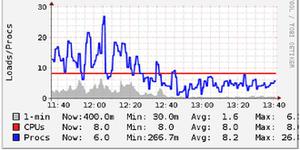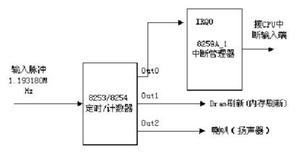华山论剑之PostgreSQLsequence(一)

前言
本文是 sequence 系列继三大数据库 sequence 之华山论剑 (Oracle PostgreSQL MySQL sequence 十年经验总结) 之后的第二篇,主要分享一下 PostgreSQL 中关于 sequence 的一些经验。
测试环境准备
以下测试是在 PostgreSQL 11 中进行。
通过以下 SQL 创建:
测试用户: alvin,普通用户,非 superuser
测试数据库: alvindb,owner 是 alvin
测试 schema: alvin,owner 也是 alvin
这里采用的是 user 与 schema 同名,结合默认的 search_path("$user", public),这样操作对象(table, sequence, etc.)时就不需要加 schema 前缀了。
postgres=# CREATE USER alvin WITH PASSWORD "alvin";CREATE ROLE
postgres=# CREATE DATABASE alvindb OWNER alvin;
CREATE DATABASE
postgres=# c alvindb
You are now connected to database "alvindb" as user "postgres".
alvindb=# CREATE SCHEMA alvin AUTHORIZATION alvin;
CREATE SCHEMA
alvindb=# c alvindb alvin
You are now connected to database "alvindb" as user "alvin".
alvindb=> SHOW search_path;
search_path
-----------------
"$user", public
(1 row)
创建 sequence 的两种方式
sequence 常规用途是用作主键序列的生成。下面通过通过创建 sequence 及表来讨论 sequence 创建方式。
创建 sequence 方式一 直接创建
下面是一种简单方式直接创建 sequence 及表。
alvindb=> CREATE SEQUENCE tb_test_sequence_test_id_seq;CREATE SEQUENCE
alvindb=>
CREATE TABLE tb_test_sequence (
test_id INTEGER DEFAULT nextval("alvin.tb_test_sequence_test_id_seq") PRIMARY KEY,
create_time TIMESTAMP DEFAULT clock_timestamp()
);
CREATE TABLE
查看已创建的对象
alvindb=> d List of relations
Schema | Name | Type | Owner
--------+------------------------------+----------+-------
alvin | tb_test_sequence_test_id_seq | sequence | alvin
alvin | tb_test_sequence | table | alvin
(2 rows)
查看已创建对象的结构
alvindb=> d tb_test_sequence Table "alvin.tb_test_sequence"
Column | Type | Collation | Nullable | Default
-------------+-----------------------------+-----------+----------+---------------------------------------------------
test_id | integer | | not null | nextval("tb_test_sequence_test_id_seq"::regclass)
create_time | timestamp without time zone | | | clock_timestamp()
Indexes:
"tb_test_sequence_pkey" PRIMARY KEY, btree (test_id)
alvindb=> d tb_test_sequence_test_id_seq
Sequence "alvin.tb_test_sequence_test_id_seq"
Type | Start | Minimum | Maximum | Increment | Cycles? | Cache
--------+-------+---------+---------------------+-----------+---------+-------
bigint | 1 | 1 | 9223372036854775807 | 1 | no | 1
alvindb=>
此时,我们会注意到,问题一,列 tb_test_sequence.test_id 的类型是 integer,而创建的 sequence 默认类型是 bigint。
这样没有问题,但如果类型一致的话会更好。
接下来,我们 drop sequence 的话,会发现,由于表依赖 sequence,所以不能单独 drop sequence。
alvindb=> DROP SEQUENCE tb_test_sequence_test_id_seq;ERROR: cannot drop sequence tb_test_sequence_test_id_seq because other objects depend on it
DETAIL: default value for column test_id of table tb_test_sequence depends on sequence tb_test_sequence_test_id_seq
HINT: Use DROP ... CASCADE to drop the dependent objects too.
alvindb=>
下面我们 drop 掉表 tb_test_sequence。
alvindb=> DROP TABLE tb_test_sequence;DROP TABLE
alvindb=> d
List of relations
Schema | Name | Type | Owner
--------+------------------------------+----------+-------
alvin | tb_test_sequence_test_id_seq | sequence | alvin
(1 row)
可以看到,问题二,虽然表 drop 了,但 sequence 还在。
这样会有什么问题呢?
在一个大型的数据库系统中,我们可能会发现有好多孤立的 sequence,因为我们 drop 表时可能会忘记 drop 掉其对应的 sequence。
现在先手动 drop 掉 sequence。
alvindb=> DROP SEQUENCE tb_test_sequence_test_id_seq;DROP SEQUENCE
alvindb=> d
Did not find any relations.
alvindb=>
我们优化一下 SQL 来解决上述两个问题:
alvindb=> CREATE SEQUENCE tb_test_sequence_test_id_seq AS INTEGER;CREATE SEQUENCE
alvindb=>
CREATE TABLE tb_test_sequence (
test_id INTEGER DEFAULT nextval("alvin.tb_test_sequence_test_id_seq") PRIMARY KEY,
create_time TIMESTAMP DEFAULT clock_timestamp()
);
CREATE TABLE
alvindb=> ALTER SEQUENCE tb_test_sequence_test_id_seq OWNED BY tb_test_sequence.test_id;
ALTER SEQUENCE
上述 SQL 的作用是:
创建 sequence 时指定类型,使列与 sequence 的类型保持一致
关联表的列与 sequence,使 drop 表或列时会自动 drop 与其关联的 sequence
查看表结构,
alvindb=> d tb_test_sequence Table "alvin.tb_test_sequence"
Column | Type | Collation | Nullable | Default
-------------+-----------------------------+-----------+----------+---------------------------------------------------
test_id | integer | | not null | nextval("tb_test_sequence_test_id_seq"::regclass)
create_time | timestamp without time zone | | | clock_timestamp()
Indexes:
"tb_test_sequence_pkey" PRIMARY KEY, btree (test_id)
alvindb=> d tb_test_sequence_test_id_seq
Sequence "alvin.tb_test_sequence_test_id_seq"
Type | Start | Minimum | Maximum | Increment | Cycles? | Cache
---------+-------+---------+------------+-----------+---------+-------
integer | 1 | 1 | 2147483647 | 1 | no | 1
Owned by: alvin.tb_test_sequence.test_id
可以看到,
- 列
tb_test_sequence.test_id与 sequence 的类型均为 integer - sequence 下方多了 "Owned by",表示列与 sequence 已关联了。
下面 drop 表后,可以看到,sequence 也已被 drop 了。
alvindb=> DROP TABLE tb_test_sequence;DROP TABLE
alvindb=> d
Did not find any relations.
实际上,如果 drop 掉列 test_id,其关联的 sequence 也会被 drop。
alvindb=> ALTER TABLE tb_test_sequence DROP COLUMN test_id;ALTER TABLE
alvindb=> d tb_test_sequence
Table "alvin.tb_test_sequence"
Column | Type | Collation | Nullable | Default
-------------+-----------------------------+-----------+----------+-------------------
create_time | timestamp without time zone | | | clock_timestamp()
alvindb=> d
List of relations
Schema | Name | Type | Owner
--------+------------------+-------+-------
alvin | tb_test_sequence | table | alvin
(1 row)
创建 sequence 方式二 通过 serial 创建
下面通过一个 SQL 来实现与上面完全相同的效果。
alvindb=> CREATE TABLE tb_test_sequence (
test_id SERIAL PRIMARY KEY,
create_time TIMESTAMP DEFAULT clock_timestamp()
);
CREATE TABLE
查看表结构,与方式一中完全一样。
alvindb=> d List of relations
Schema | Name | Type | Owner
--------+------------------------------+----------+-------
alvin | tb_test_sequence | table | alvin
alvin | tb_test_sequence_test_id_seq | sequence | alvin
(2 rows)
alvindb=> d tb_test_sequence
Table "alvin.tb_test_sequence"
Column | Type | Collation | Nullable | Default
-------------+-----------------------------+-----------+----------+---------------------------------------------------
test_id | integer | | not null | nextval("tb_test_sequence_test_id_seq"::regclass)
create_time | timestamp without time zone | | | clock_timestamp()
Indexes:
"tb_test_sequence_pkey" PRIMARY KEY, btree (test_id)
alvindb=> d tb_test_sequence_test_id_seq
Sequence "alvin.tb_test_sequence_test_id_seq"
Type | Start | Minimum | Maximum | Increment | Cycles? | Cache
---------+-------+---------+------------+-----------+---------+-------
integer | 1 | 1 | 2147483647 | 1 | no | 1
Owned by: alvin.tb_test_sequence.test_id
这里总结一下一个单词 SERIAL 做了什么事情:
- 根据规则
tablename_colname_seq创建 sequence,并设置 DEFAULT - 增加 NOT NULL 约束
- 关联列与 sequence,使表或关联的列 drop 时,关联的 sequence 也会被 drop 掉
注:这里 SERIAL 和 PRIMARY KEY 之一都会默认增加 NOT NULL 约束
用 SERIAL 的确省了不少事,但它有什么问题吗?使用它会不会又引入了新的问题?
- SERIAL 对应的数据类型是 integer,作为主键的数据类型,integer 足够吗?
- 关联列与 sequence 后,drop 时是方便了,但同时会不会给运维带来新的问题?比如 rename 表,列或 sequence?
- 在复制表或迁移表时,又该对 sequence 作何操作呢?
接下来,我们从这几个问题出发进一步探讨。
serial 与 bigserial
serial 对应的是 integer,是 4 个字节,最大值是 2 147 483 647,即 21 亿左右。
作为大表主键的 sequence,21 亿真的够吗?按全球人口 70 亿算,一人一个数都不够。
为解决这个问题,可以用 bigserial,即 bigint,8 个字节,最大值是 9 223 372 036 854 775 807,即 922亿个亿左右。这对于绝大多数场景是足够了,这也是 PostgreSQL 中 sequence 的最大值。
使用 bigserial 创建表:
alvindb=> CREATE TABLE tb_test_bigserial (
test_id BIGSERIAL PRIMARY KEY,
create_time TIMESTAMP DEFAULT clock_timestamp()
);
CREATE TABLE
查看表结构,
alvindb=> d tb_test_bigserial Table "alvin.tb_test_bigserial"
Column | Type | Collation | Nullable | Default
-------------+-----------------------------+-----------+----------+----------------------------------------------------
test_id | bigint | | not null | nextval("tb_test_bigserial_test_id_seq"::regclass)
create_time | timestamp without time zone | | | clock_timestamp()
Indexes:
"tb_test_bigserial_pkey" PRIMARY KEY, btree (test_id)
alvindb=> d tb_test_bigserial_test_id_seq
Sequence "alvin.tb_test_bigserial_test_id_seq"
Type | Start | Minimum | Maximum | Increment | Cycles? | Cache
--------+-------+---------+---------------------+-----------+---------+-------
bigint | 1 | 1 | 9223372036854775807 | 1 | no | 1
Owned by: alvin.tb_test_bigserial.test_id
可以看到,列 test_id 和 sequence 的 Type 都是 bigint。这样,sequence 的类型问题就解决了。
公众号
关注 DBA Daily 公众号,第一时间收到文章的更新。
通过一线 DBA 的日常工作,学习实用数据库技术干货!
公众号优质文章推荐
PostgreSQL VACUUM 之深入浅出
华山论剑之 PostgreSQL sequence
[PG Upgrade Series] Extract Epoch Trap
[PG Upgrade Series] Toast Dump Error
GitLab supports only PostgreSQL now
MySQL or PostgreSQL?
PostgreSQL hstore Insight
ReIndex 失败原因调查
PG 数据导入 Hive 乱码问题调查
PostGIS 扩展创建失败原因调查
以上是 华山论剑之PostgreSQLsequence(一) 的全部内容, 来源链接: utcz.com/z/536329.html









